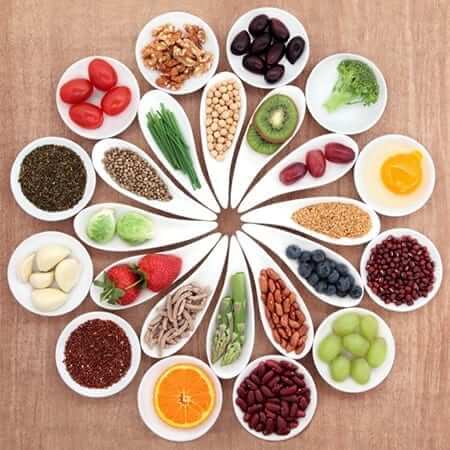People with diabetes need plenty of fiber foods but often fall short on how much they should eat every day. Increasing your daily fiber intake can improve your heart health, help you maintain blood sugar control, and help you lose weight. Find out how to add the right types of fiber to your meal plan for optimum well-being.
- Fiber foods can help you manage diabetes, shed pounds, and maintain better blood sugar control. Recent research published in the Journal of the American Board of Family Medicine revealed a high fiber diet can even help lower your A1C results. Most people in the United States consume just 10 to 20 grams of fiber per day. According to the Institute of Medicine, men under 50 should get 38 grams daily and men over 50 should get 30 grams daily. Women under 50 should get 25 grams per day and women over 50 should get 21 grams. People with diabetes should get a minimum of 25 to 30 grams of fiber per day.
- Fiber is important because it provides bulk to help you minimize hunger pangs and improve your digestion. Fiber can work to decrease cholesterol. It slows the rise in blood sugar that can occur after eating a meal. It is also the basis for a heart-healthy eating plan. Adding fiber to your daily diet can help you lose weight and ward off possible heart complications related to diabetes including heart disease and stroke.
- Most of the grains you consume should be whole grains. Instead of sugary breakfast cereals, have whole-grain cereals such as bran or oatmeal. Incorporate wild rice, quinoa, bulgur, barley, buckwheat or whole-grain pasta into your meals. Read the nutrition labels carefully. High fiber foods have at least 5 grams of fiber per serving. Stay away from empty calories found in white bread, white pasta and packaged snacks.
- Consuming vegetables and beans are great ways to add essential fiber, vitamins and minerals to your meals and snacks. Beans are also an excellent source of iron and protein that make you feel full and satisfied. Opt for fresh or frozen vegetables over canned ones that may contain more salt and less fiber. Green, leafy vegetables are a good choice including broccoli, brussel sprouts, asparagus, and spinach. While corn, potatoes, and peas contain fiber, they are considered starchy carbohydrates. People with diabetes should moderate their intake of these veggies.
- Fresh fruits are a tasty way to get the fiber you need. They are delicious snacks and desserts. Try to eat fruit with the skin on to get the most fiber. Choose fruits such apples, pears, blackberries and raspberries. Be aware of higher carbohydrate counts with dried fruits such as figs or prunes. If you still crave something sweet, sugar-free desserts satisfy the urge without causing blood sugar spikes. Be aware of the sugar in fruit to properly moderate your daily intake.
- Slowly add fiber to your meals to avoid unpleasant gas and bloating. Add one serving a day and make better choices such as whole grain bread over white bread. Drink plenty of water all day to help your body use the fiber. If you have difficulty adding enough fiber to your meals, ask your doctor about fiber supplements.
People with diabetes can lower their blood sugar, moderate their weight and hunger, and reduce the risk of heart disease by adding fiber to their daily diets. Make sure to consider the amount of carbohydrates and sugar found in certain high-fiber foods and always read nutritional labels. Talk to your doctor or dietitian about creative ways to add fiber to your daily meal plan.













Leave A Comment